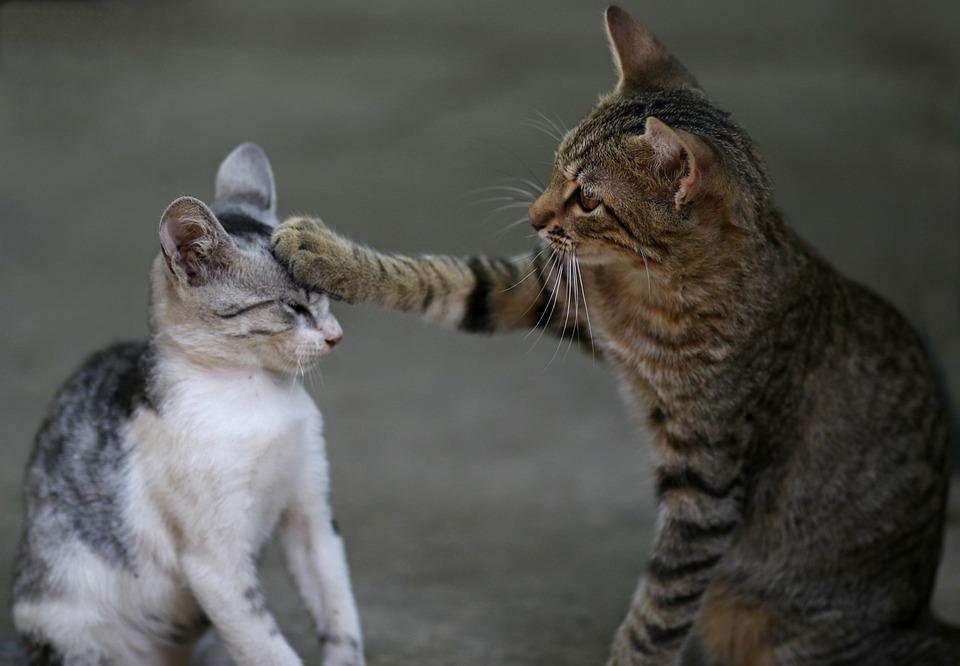Introducing a new cat to your household can be an exciting but challenging experience. Properly introducing cats to one another requires patience, understanding, and careful planning. In this article, we will explore effective strategies for introducing a new cat to resident cats, ensuring a smooth transition and harmonious coexistence. Additionally, we will address some frequently asked questions (FAQs) to help you navigate this process with confidence.
Before bringing a new cat into your home, it is crucial to make the necessary preparations to ensure a successful introduction. Creating a safe space for the new cat is essential. Designate a separate room equipped with all the necessities such as a litter box, food and water bowls, scratching posts, toys, and a cozy bed. Ensure the room is escape-proof and inaccessible to resident cats.
Scent exchange is another important step in preparing for introduction. Rubbing a cloth or towel on the new cat and then rubbing it on the resident cats helps familiarize them with each other’s scents, reducing potential territorial aggression. This can be done multiple times a day for a few days before the actual introduction.
Prior to introducing the new cat, schedule a veterinary check-up to ensure they are healthy and free from contagious diseases. Vaccinations and spaying/neutering should also be done if necessary.
Once the preparations are in place, it’s time to start the introduction process. Gradual introduction is key to prevent conflicts and establish positive relationships. Begin by allowing the cats to interact indirectly through a door or gate. Exchange bedding or toys between the cats to further familiarize them with each other’s scents.
Controlled visual contact can be established using a baby gate or a cracked door. This allows the cats to see each other without direct physical contact. Observe their reactions, body language, and vocalizations for signs of comfort or distress.
Short and supervised sessions should be conducted gradually. Increase the cats’ interaction time over time, always under close supervision. Offer treats and positive reinforcement during these sessions to associate positive experiences with each other’s presence.
Positive reinforcement is crucial throughout the introduction process. Reward desirable behavior, such as calmness and friendly approaches, with treats and praise. Avoid punishment or negative reinforcement as it can escalate tensions and hinder the introduction process.
Once both cats show signs of acceptance, allow them to interact in neutral territories, such as common areas, while closely monitoring their behavior. Gradually increase their access to shared spaces over time.
Now, let’s address some frequently asked questions (FAQs):
Q1. How long does it usually take for cats to get along?
A1. The timeline for cats to establish harmonious relationships varies. It can take anywhere from a few weeks to several months. Patience and gradual introductions are key.
Q2. What signs indicate that the introduction is going well?
A2. Positive signs include relaxed body language, friendly approaches, playfulness, and shared spaces without aggression or excessive tension.
Q3. Should I punish my cats if they display aggression during the introduction process?
A3. No. Punishment can worsen the situation and hinder the introduction process. Instead, redirect their attention, reward positive behavior, and seek professional advice if needed.
Q4. What should I do if the cats continue to fight or show extreme aggression?
A4. Separate the cats, consult a veterinarian or an animal behaviorist for guidance, and consider reintroducing them using a slower and more controlled approach.
In conclusion, introducing a new cat to resident cats requires careful planning, patience, and a gradual introduction process. Following the steps outlined in this article will increase the likelihood of a successful and harmonious integration. Remember, each cat is unique, and the time it takes for them to get along may vary. By understanding their behavior and providing a safe, controlled environment, you can create a peaceful multi-cat household.








